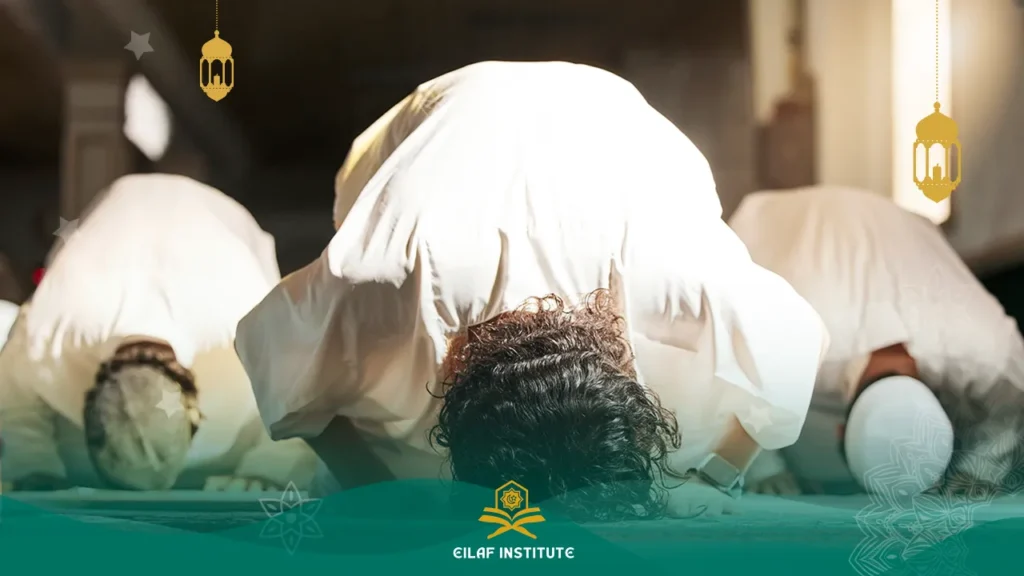Maghrib is one of the five obligatory daily prayers in Islam, performed just after sunset. This islamic prayer maghrib holds a special place in the lives of Muslims. In this article, we’ll briefly explore what is Maghrib Prayer, its timing, significance, and how it’s performed.
What is Maghrib Prayer?
The maghrib prayer is the fourth mandatory prayer of the day for Muslims, following the Asr and preceding the Isha prayer. Understanding what is Maghrib Prayer begins with knowing its place in the daily cycle of worship.
It is conducted after the sun has set and the sky has become black. Maghrib prayer consists of three Rak’ats (units of prayer) and is obligatory for all adult Muslims who have attained puberty and are sane.
The Significance of the Maghrib Prayer in Islam
The significance of maghrib prayer is essential in Islam since it symbolises the conclusion of the day and the beginning of the night.
It is a moment when Muslims take a break from their everyday duties and turn to Allah for prayer. Answering the question of what is Maghrib Prayer involves understanding its deep spiritual importance.
Maghrib prayer is a means of requesting Allah’s forgiveness, expressing thankfulness for His favors, and seeking direction in our daily lives.
Understanding the Timing and Purpose of the Maghrib Prayer
What is maghrib time? The Maghrib Prayer starts when the sun sets and continues until twilight, also known as the evening prayer performed after sunset.
It consisted of three Fard Rakats Fard followed by two for Sunnah.
The Maghrib prayer is distinct from the five daily prayers recommended by Islam; the maghrib meaning directly translates to ‘sunset’ in Arabic.
This maghrib salah is significant because it is customarily conducted just after sunset, symbolizing thanksgiving for the day’s blessings and allowing spiritual introspection as nature transitions peacefully from day to night.
This Salah has a symbolism and historical reference as it was established during Prophet Muhammed’s Miraj (night journey), during which Allah ordered Muslims to perform Salah as an obligatory worship and Allah SWT instructed him on the importance and structure of each prayer.
So we can state that:
- The Maghrib Salah’s timing is: Immediately after sunset until twilight.
- The Maghrib Salah’s Purpose is: Symbolizing thanksgiving for the day’s blessings.
Benefits of Performing Maghrib Prayer
Each Salah has a lot of benefits, and it affects Muslims’ daily lives. The benefits of maghrib prayer are numerous, and performing it regularly has many positive impacts, both spiritual and physical, which are:
- Strengthening trust and relationship with Allah.
- Improved attention and focus in everyday life.
- Improved physical health, because prayer involves bodily movements and postures.
- Stress reduction and mental relaxation.
These benefits are an integral part of understanding what is Maghrib Prayer.
How to Perform Maghrib Prayer
For those wondering how to pray maghrib, the process has the same core steps as each Salah and the same conditions or preparations. Performing Maghrib Salah is similar to other prayers, and this guide on what is Maghrib Prayer will walk you through it.
Here is the guide to performing Maghrib:
- Perform the right Ablution (Wudu).
- Bring the intention (Niyyah) of praying Maghrib.
- Stand up for the Qyiam.
- Perform the Takbir Saying (Allahu Akbar) out loud.
- Recite Surah Al-Fatihah.
- Perform the Ruku (Bowing Down) saying (Subhana Rabbiyal Adheem) 3 times.
- Stand up from Ruku saying (Sami Allahu liman hamidah).
- Perform Sujud (prostration) by saying “Subhana Rabbiyal A’la” 3 times.
- Sit up from Sujud and say “Allahu Akbar” to return to the standing position.
- Repeat the steps from 4 to 9 for the second Rakaa.
- After the second Rakaa, sit down and say the Tashahhud (a prayer recited while sitting).
- Recite the Taslim (saying “Assalamu Alaikum wa Rahmatullah” to end the prayer) to the right and left.
The Sunnah Actions of Maghrib Prayer
The Sunnah of Maghrib is two rak’ahs following the Maghrib prayer.
As evidenced by the hadith of Abdullah Ibn Omar – may God be pleased with him, who stated: (I memorised ten rak’ahs from the Prophet; may God bless him and grant him peace).
“Two rak’ahs before noon and two after noon, He performed two rak’ahs after dusk, two rak’ahs after dinner, and two rak’ahs before dawn prayer. And there was an hour during which he did not approach the Prophet; may God bless him and grant him peace. Hafsa told me that when the muezzin called for prayer and dawn came, he would pray two rak’ahs”. Al-Bukhari narrated.
“ركعتان قبل الظهر، وركعتان بعد الظهر، وركعتان بعد المغرب، وركعتان بعد العشاء، وركعتان قبل صلاة الفجر، وكانت ساعة لا يدنو فيها من النبي صلى الله عليه وسلم، أخبرتني حفصة أنه إذا أذن المؤذن وطلع الفجر صلى ركعتين”. رواه البخاري.
Book Now New Muslim Converts Course
Unlock Your Potential with Eilaf
Take a meaningful step toward personal growth by joining Eilaf, where you can deepen your knowledge of Islamic Studies, enhance your Arabic skills, and recite the Holy Qur’an with confidence. We hope this guide has clearly explained what is Maghrib Prayer.
Eilaf offers highly qualified instructors, accredited certifications, and flexible schedules, so you can learn anytime, anywhere, regardless of your time zone.
Start your journey today and explore our diverse courses.
Source:

